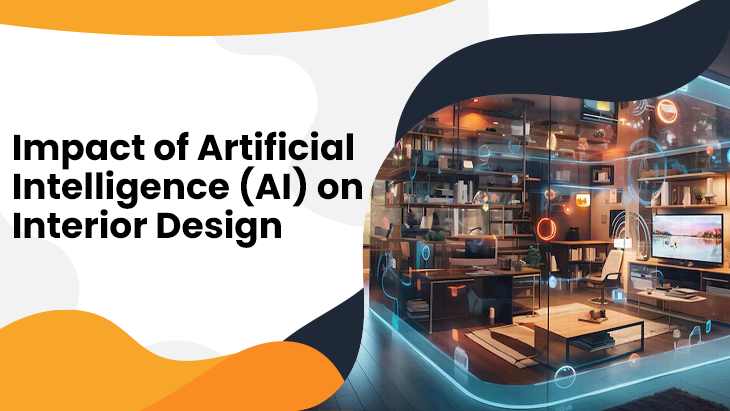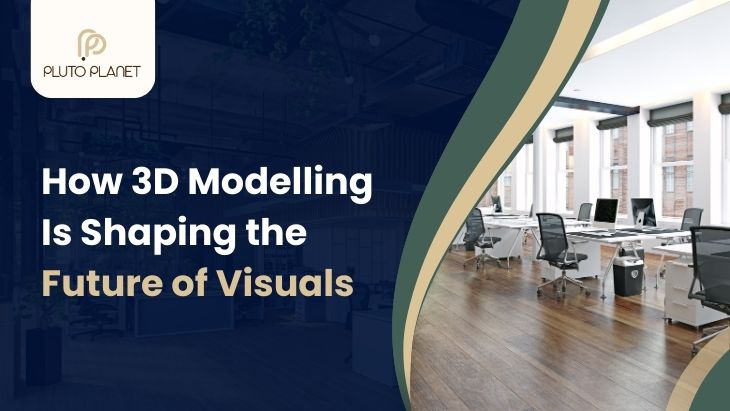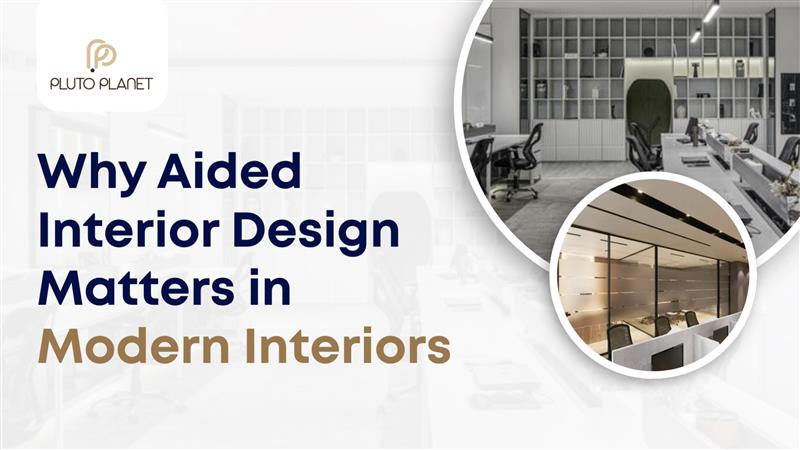The world of interior design is evolving at an unprecedented pace, and at the heart of this transformation lies artificial intelligence (AI). Gone are the days when interior design was solely about intuition and manual effort. Today, AI is revolutionizing the industry, bringing innovation, efficiency, and creativity to new heights. This guide will take you on a journey through the remarkable impact of AI on interior design, showcasing how technology is reshaping spaces and redefining creativity.
Understanding AI In Interior Design: The Basics
Before diving into the specifics, it’s essential to understand what AI [Artifical Intelligence] is and how it integrates into interior design. Artificial intelligence refers to the simulation of human intelligence in machines, enabling them to perform tasks that typically require human cognition, such as learning, problem-solving, and decision-making.In Office interior design, AI leverages algorithms and data to create intelligent design solutions. From generating design ideas to optimizing space usage, AI tools are becoming indispensable for designers seeking to push the boundaries of creativity and efficiency.
Streamlining the Design Process: From Concept to Creation
One of the most significant impacts of AI in interior design is its ability to streamline the entire design process. Traditionally, designing a space involved numerous steps, from initial sketches to final installations. AI, however, accelerates this process, making it more efficient and precise.
Generating Design Ideas
AI-powered tools can generate design ideas based on user preferences and current trends. By analyzing vast amounts of data, these tools can suggest color schemes, furniture layouts, and decor styles that align with the client’s taste. This not only saves time but also opens up a world of creative possibilities.
Visualizing Designs
Gone are the days of relying solely on 2D sketches and mood boards. AI enables designers to create realistic 3D visualizations of their concepts. Virtual reality (VR) and augmented reality (AR) technologies allow clients to immerse themselves in a virtual space, experiencing the design before any physical changes are made. This level of visualization helps in making informed decisions and reducing the likelihood of costly mistakes.
Customizing Solutions
AI excels at personalization. By gathering data on client preferences, lifestyle, and spatial requirements, AI can tailor design solutions to meet specific needs. Whether it’s custom furniture pieces or unique decor elements, AI ensures that every design is bespoke, reflecting the individuality of the client.
Enhancing Creativity: AI as a Co-Creator
Contrary to the fear that AI might replace human creativity, it is proving to be a powerful co-creator. AI provides designers with tools and insights that enhance their creative process, pushing the boundaries of what’s possible.
Inspiration and Trends AI tools can analyze global design trends, drawing inspiration from various sources such as social media, design blogs, and industry publications. This helps designers stay ahead of the curve and incorporate the latest styles and innovations into their projects. Moreover, AI can predict emerging trends, allowing designers to be trendsetters rather than followers.
Experimenting with Designs
AI-powered design software allows for rapid experimentation. Designers can quickly test different color palettes, furniture arrangements, and decor elements, seeing the results in real-time. This ability to iterate swiftly fosters creativity, enabling designers to explore multiple concepts before settling on the perfect design.
Overcoming Creative Blocks
Every designer faces creative blocks from time to time. AI can serve as a valuable brainstorming partner, suggesting new ideas and perspectives that might not have been considered. By analyzing successful designs and identifying common elements, AI can inspire designers to think outside the box and find innovative solutions.
Optimizing Space: Intelligent Layouts and Functionality
One of the most challenging aspects of Workspace interior design is optimizing space for functionality and aesthetics. AI excels in this area, offering intelligent solutions that maximize space utilization without compromising on style.
Space Planning
AI tools can analyze floor plans and suggest optimal layouts based on the dimensions and intended use of the space. Whether it’s a compact apartment or a sprawling office, AI can create layouts that enhance flow, accessibility, and comfort. This ensures that every square foot is used efficiently.
Furniture Arrangement
Arranging furniture can be a daunting task, especially in irregularly shaped rooms. AI simplifies this by recommending furniture arrangements that maximize space and functionality. By considering factors such as traffic flow, lighting, and ergonomics, AI ensures that the furniture placement is both practical and visually appealing.
Smart Storage Solutions
Clutter can quickly diminish the aesthetic appeal of any space. AI helps designers incorporate smart storage solutions that keep spaces organized and tidy. From built-in cabinets to multifunctional furniture, AI can suggest innovative ways to hide clutter and maintain a clean, minimalist look.
Sustainability and Eco-Friendly Designs: Building a Greener Future
As sustainability becomes a top priority in design, AI is playing a crucial role in promoting eco-friendly practices. AI can analyze environmental data and suggest sustainable materials, energy-efficient designs, and waste reduction strategies.
Sustainable Material Selection
AI can identify and recommend sustainable materials that have a lower environmental impact. By analyzing factors such as carbon footprint, recyclability, and durability, AI ensures that the chosen materials contribute to a greener future.
Energy Efficiency
AI tools can design spaces that are energy-efficient, reducing the overall carbon footprint. By optimizing natural light, improving insulation, and integrating smart home technologies, AI helps create designs that are both beautiful and environmentally responsible.
Waste Reduction
During the design and construction process, minimizing waste is crucial. AI can predict the exact amount of materials needed, reducing excess and ensuring that resources are used efficiently. This not only lowers costs but also contributes to a more sustainable design practice.
Enhancing Client Experience: Personalized and Interactive Design
Client satisfaction is paramount in interior design, and AI significantly enhances the client experience by making the design process more personalized and interactive.
Interactive Design Platforms
AI-powered design platforms allow clients to participate actively in the design process. Clients can input their preferences, view real-time changes, and provide instant feedback. This collaborative approach ensures that the final design aligns perfectly with the client’s vision.
Virtual Tours
Virtual tours powered by AI and VR technologies offer clients a realistic preview of their space. By walking through a virtual version of the design, clients can experience the look and feel of the space, making it easier to provide feedback and make informed decisions.
Personalized Recommendations
AI can analyze client data to offer personalized recommendations. Whether it’s suggesting decor pieces that match the client’s style or recommending improvements based on lifestyle needs, AI ensures that every aspect of the design is tailored to the client’s preferences.
The Future of AI in Interior Design: Endless Possibilities
The integration of AI in interior design is just the beginning. As technology continues to advance, the possibilities for innovation are endless.
Advanced AI Algorithms
Future advancements in AI algorithms will make design tools even more intuitive and powerful. AI will be able to understand and predict client preferences with greater accuracy, creating designs that are perfectly aligned with their needs.
Integration with Smart Home Technology
As smart home technology becomes more prevalent, AI will play a crucial role in integrating these systems seamlessly into interior designs. From automated lighting and climate control to voice-activated devices, AI will ensure that homes are not only beautiful but also intelligent and responsive.
Collaborative Design Platforms
The future of interior design will see increased collaboration between designers and AI. Collaborative design platforms will allow multiple designers to work together, leveraging AI’s capabilities to create innovative and cohesive designs.
Conclusion: Embracing the AI Revolution in Interior Design
The impact of artificial intelligence on interior design is profound and transformative. By streamlining processes, enhancing creativity, optimizing space, promoting sustainability, and improving client experiences, AI is reshaping the industry in remarkable ways.As we look to the future, embracing AI’s potential will be essential for designers seeking to stay ahead of the curve. The fusion of human creativity and technological innovation promises a new era of interior design where spaces are not only aesthetically pleasing but also intelligent, sustainable, and deeply personalized. Plutoplanet Inaugrates you to the future of interior design a world where technology and creativity converge to create spaces that inspire and delight. The AI revolution is here, and it’s transforming the way we design, live, and experience our environments. Let’s embrace this exciting journey together.









Leave a reply